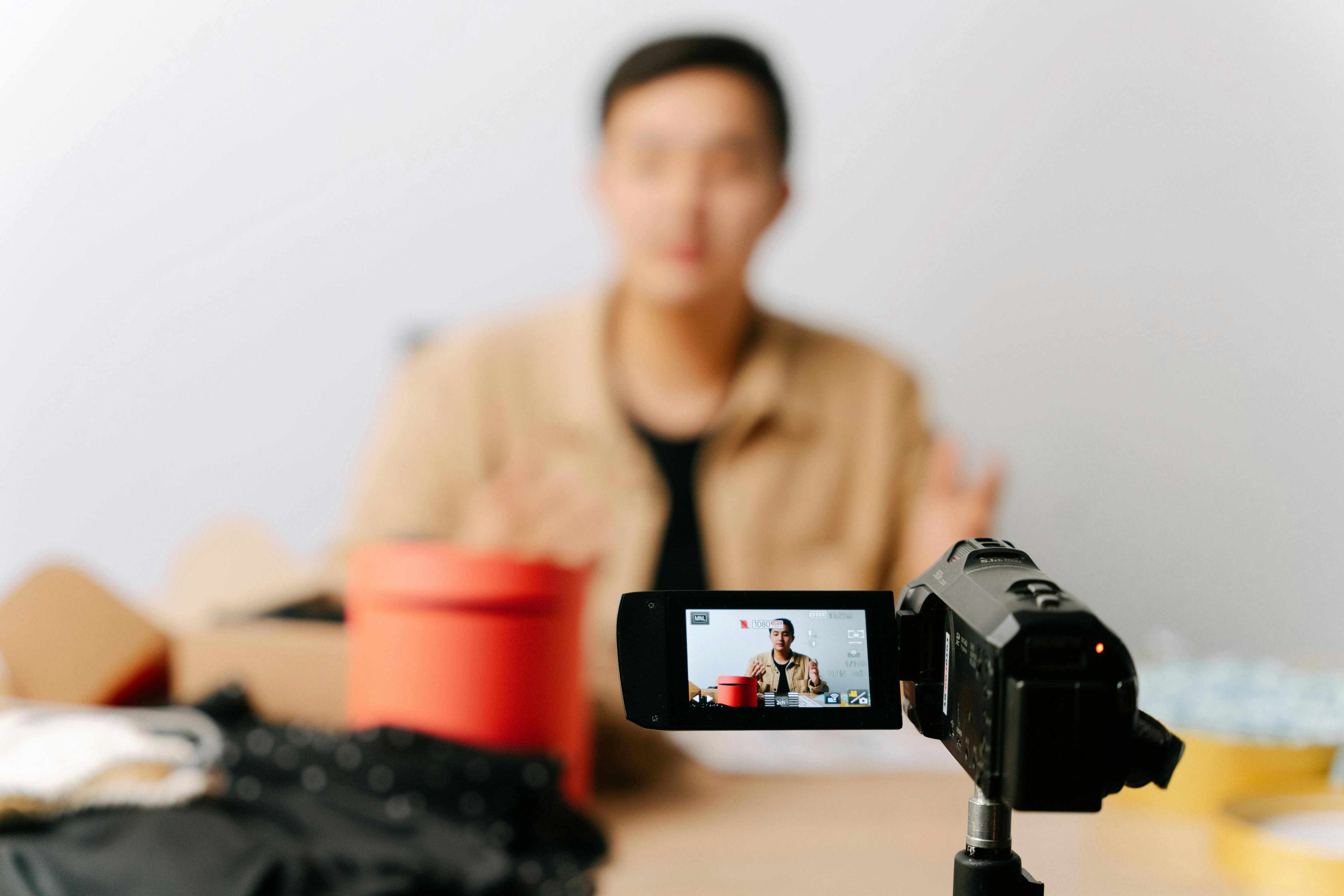We once worked with a creator named Emily, who had all the makings of a YouTube streaming star—a magnetic personality, fresh content ideas, and a steadily growing audience. Yet, her live streams were a disaster. Glitchy video, echoing audio, and awkward moments of dead air plagued her broadcasts. She thought the solution was to throw money at the problem and invested $1,000 in new gear. Yet, the issues persisted, and viewers left in droves.
Together, we worked on fine-tuning her streaming strategy, identifying what was missing, and making targeted adjustments. Let’s break down the key insights and strategies for stream setups we’ve learned along the way.
Getting the Tech Right Without Overdoing It
When it comes to streaming, the tools you use set the foundation, but more doesn’t always mean better. A clear camera feed and crisp audio are essential, but it’s about finding the right gear for your needs, not the flashiest options.
For most creators, a good 1080p webcam is enough. Pairing it with proper lighting, such as softbox lights or LED panels, can make a basic streaming setup look professional. Even a budget-friendly microphone, like the Elgato Wave 3, can significantly elevate your stream quality, as audio clarity often matters more than visuals.
Internet reliability is non-negotiable. A wired Ethernet connection is always preferable, ensuring stability during high-traffic moments. Streaming software for YouTube or Twitch also plays a role; tools like OBS Studio allow for deep customization if you’re willing to invest time in learning, while Streamlabs offers a more user-friendly experience.
If you haven’t yet, try 24/7 live streaming of prerecorded videos. We’ve seen this strategy contribute 45-67% of channel income for many creators. With tools like Gyre, you can set it up without investing in extra hardware.
Crafting a YouTube Stream That Holds Attention
A successful stream isn’t just about turning on the camera—it’s about creating a show. If you’re wondering how to set up a live stream on YouTube, starting strong is vital. Opening with an engaging hook, whether a teaser about an exciting moment or a personal welcome, captures attention from the first seconds. Streams without direction often lose viewers quickly, so having a structure can make all the difference.
We recommend treating your stream like a live show. Divide it into segments—for example, an introduction, your main activity or topic, and a Q&A session to wrap things up. Transitions between these sections can be smoothed out with visuals, such as animated overlays or simple on-screen text.
One thing we’ve seen work well is the use of visual variety to break the monotony. Whether it’s a quick pre-recorded clip, a screen change to highlight audience comments, or a simple animated transition, keeping the visuals dynamic adds energy to the stream.
We’ve helped hundreds of creators boost their income by up to 30% with live streams. Contact us for a consultation on how to set up a live stream, and we’ll provide tools and strategies that work.
The Art of Audience Engagement During a Stream
The strongest streams are built on interaction. When your viewers feel seen, they’re far more likely to stick around and return for future broadcasts. Small gestures, such as addressing viewers by name or acknowledging regular attendees, create a sense of community.
One creator we worked with took this a step further by keeping a spreadsheet of loyal viewers, noting details like favorite topics or milestones. It sounds meticulous, but this personalization made her audience feel genuinely valued.
Live polling is another powerful tool. Asking viewers to weigh in on a decision—what game to play next, for instance—fosters engagement and makes them part of the content. The same goes for live challenges or audience shoutouts; they add an interactive layer that turns passive viewers into active participants.
Here are some more ways to hold your audience’s attention:
- Use real-time polls to let viewers vote on key decisions. A gaming streamer can use a live poll to decide which weapon to use, keeping viewers invested in the outcome.
- Build anticipation for big moments with timers. A fitness creator might tease their toughest workout set with a 5-minute countdown for instance.
- Hide easter eggs to engage viewers with hidden surprise. You can hide small icons or objects in your layouts, challenging your audience to spot them for a shoutout or prize.
We’ve also noticed that some of the most memorable moments in streams come from unscripted chaos. Leaning into these unexpected twists while maintaining control—thanks to tools like chat moderators and content filters—can create highlights your audience will talk about long after the stream ends.

Super Features: Unlocking Revenue and Connection
One of the most overlooked tools in live streaming is the array of super features available—Super Chats, Super Stickers, and channel memberships. These features do more than boost revenue; they deepen audience engagement by making viewers feel directly involved.
When creators actively encourage the use of these features, it changes the dynamic. Imagine pausing mid-stream to thank a viewer for their Super Chat or using a Super Sticker as a cue to share a funny or personal anecdote. The small monetary exchange makes viewers feel like they’re part of a VIP club.
Memberships, too, can elevate your connection with your audience. Offer exclusive perks—behind-the-scenes content, members-only streams, or shoutouts—and promote them subtly during your live session. Highlighting these perks as ways to support your channel turns your most loyal viewers into active contributors to your growth.
Setting up YouTube Memberships is simple. We've helped lots of creators do it in ways that boosted their income by up to 30%. It doesn’t take much time, but it can generate consistent revenue. Contact us for tips and professional assistance.
24/7 Streams: Passive Traffic, Massive Potential
Many creators want to know how to set up a 24/7 live stream on YouTube as it’s a growing trend. These continuous streams offer a way to keep your channel active around the clock, attracting viewers from different time zones and driving consistent engagement.
We’ve seen creators across niches—from gaming to motivation channels—use 24/7 live stream setups to great effect. For instance, one gaming creator set up a loop of pre-recorded gameplay highlights, complete with a live chat feature, while a music creator streamed 8 relaxing playlists of original tracks in parallel. Both found that these streams acted as magnets for new subscribers and passive ad revenue.
The secret to a successful 24/7 stream lies in planning. Curate content that can run seamlessly for hours without losing relevance or quality. Think about what viewers might want to watch during late hours or in the background—study sessions, soothing music, or ongoing discussions on trending topics. The key is to offer value, even passively.
You can set up a 24/7 live stream with Gyre’s free trial or contact us directly, and we’ll handle the setup for you—from optimizing videos to crafting the perfect multi-streaming strategy.
Promote Your Stream in Advance
What happens before you go live is really important. Start by creating buzz early. Use your community tab, Instagram Stories, or Twitter to tease the stream a few days in advance. Share hints about the main topic, the special guests, or a surprise you’re planning.
Timing matters. Publish your stream’s thumbnail and schedule the event at least 48 hours before going live. This gives YouTube’s algorithm time to notify your subscribers and recommend the stream to new viewers. Pair this with a countdown post on your socials, adding context about why the stream will be worth watching.
Finally, don’t forget cross-promotion. Collaborate with other creators in your niche by sharing each other’s streams, or even co-hosting an event. We’ve seen creators double their live attendance by leveraging each other’s audiences in this way.

After the Cameras Stop Rolling
What happens after your stream ends can be just as important as the stream itself. Reviewing analytics is the first step. Platforms like YouTube and Twitch provide insights into when viewers tuned in and dropped off. These metrics are gold for understanding what worked and where improvements are needed.
You can repurpose every stream. Pull highlights for Shorts and TikToks, use audience questions to inspire future content, and share clips on your community tab to keep engagement alive between streams. This approach not only maximizes the value of her live sessions but also extends their reach to new audiences.
Lastly, a simple post-stream follow-up can go a long way. Thanking viewers on social media, linking to the replay, and teasing the next stream are small actions that build anticipation and strengthen loyalty.
Consistency Over Perfection
Your audience doesn’t expect a Hollywood production; they want authenticity, regularity, and a reason to connect with you. Dial in your stream setup, plan your content, and most importantly, keep showing up.
Streaming isn’t just about technical know-how or flawless execution—it’s about building a space where your audience feels like they belong. Do that, and the rest will follow.
Now, what’s your next step to improving your stream? Let’s make it happen together. Hit us up and we’ll share not only how to set up a stream, but also how to do it right.



